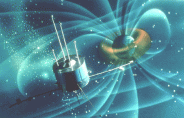A brief history of ... space

How did we get from a 'flat Earth at the centre of the Universe' model to our current understanding of the Solar System? This process has been a long and winding pathway through the history of science. Periodically, over time, a gifted individual has joined the journey along the pathway to challenge the accepted view, before passing the batton on. This brief account looks at some of the major milestones, and looks at some of the principal players in this story.
What is weightlessness? What is orbital motion?

There are many common misconceptions about these topics, which the text attempts to dispel with the aid of everyday examples. The main focus is on orbits, and how an operational orbit is chosen for a particular spacecraft project. Spacecraft engineers use a great variety of orbits to achieve their objectives - from 'basic' Earth orbits to gravity-assist swingbys. The book looks at all the details of modern orbital analysis, but without the use of equations.
Rocket Science

How do spacecraft get off the ground and into orbit? The fundamentals of launch vehicles are discussed, illustrated by some amazing 'gee-whiz' stuff about the space shuttle (which still represents the current pinnacle in rocket engineering, despite it's retirement in 2011). This section closes with a glimpse of the 'holy grail' of rocket scientists - a single-stage-to-orbit launcher that operates like an aeroplane. This poses many technical challenges, principally associated with rocket propulsion and materials science. However it would drastically reduce the cost of access to orbit, which is the key to future exploitation of space - especially space tourism.
Orbit Environment

When spacecraft reach orbit they are exposed to a hazardous environment which threatens their operation. Hostile aspects, including vacuum, radiation and space debris, are discussed. The challenges posed by the environment must be overcome, in the spacecraft design, to ensure successful completion of the spacecraft's mission.
How are spacecraft designed?

Spacecraft are complex 'machines' operating in a hostile environment, which require a wide spectrum of engineering expertise in the processes of design, manufacture and operation. This complexity is broken down, using layman's language, to reveal the fascinating topic of spacecraft design illustrating why spacecraft look the way they do.
Human Spaceflight in the 21st Century

What are the prospects for human space exploration this century? Will there be a resurgence of exploratory space, after the last three decades when the emphasis has been mainly on applications - such as communications, navigation and Earth observation? What impact will the retirement of the US space shuttle have? This chapter examines these issues, which are influenced by the current complex political and economic landscape.
We can sensibly ask questions about the reasons for doing human spaceflight in a time of financial stringency, such as - why fly the International Space Station?; why go back to the moon?; what are the prospects for future exploration of Mars?
We can sensibly ask questions about the reasons for doing human spaceflight in a time of financial stringency, such as - why fly the International Space Station?; why go back to the moon?; what are the prospects for future exploration of Mars?
Space - the final frontier?

Do we have a choice whether we become a space-faring species? The last chapter explores a couple of issues that relate to the necessity for us to be fully engaged in the business of safe and inexpensive access to space.
The first is the need to establish an effective planetary defence strategy in the event that the Earth is threatened with global catastrophy as a result of an asteroid or cometary impact. The second is the ultimate need for the human race to vacate its home planet in the distant future, when the Sun's nuclear fuel expires. This notion of our successors having to leave home in this way has become a bit of cliche of contemporary science fiction, but nevertheless the technologies required to voyage across the cosmos will need to be developed. The bottom line is that ultimately our survival as a species depends on our learning to live and work in space.
The first is the need to establish an effective planetary defence strategy in the event that the Earth is threatened with global catastrophy as a result of an asteroid or cometary impact. The second is the ultimate need for the human race to vacate its home planet in the distant future, when the Sun's nuclear fuel expires. This notion of our successors having to leave home in this way has become a bit of cliche of contemporary science fiction, but nevertheless the technologies required to voyage across the cosmos will need to be developed. The bottom line is that ultimately our survival as a species depends on our learning to live and work in space.
Find out more ...
The breadth of coverage in the book is significant - if you need more depth in a particular topic try googling (using www.google.co.uk, or your national equivalent)
